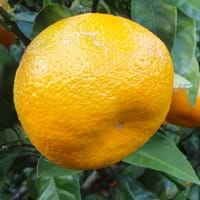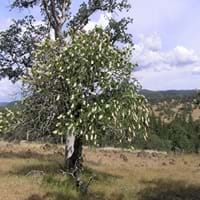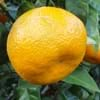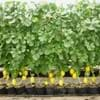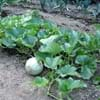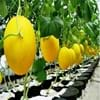Life Span
Annual
Perennial
Origin
China, Japan
California
Types
Not available
Not Available
Habitat
Subtropical climates
Hillside
USDA Hardiness Zone
8-11
7-9
Sunset Zone
H1, H2, 8, 9, 12, 13, 14, 15, 16, 17, 18, 19, 20, 21, 22, 23, 24
3a, 3b, 4, 5, 6, 7, 8, 9, 10, 14, 15, 16, 17, 18, 19, 20, 21, 22, 23, 24
Habit
Spreading
Oval or Rounded
Flower Color
White
White, Pink
Flower Color Modifier
Bicolor
Bicolor
Fruit Color
Green, Orange, Orange Red
Yellow Brown
Leaf Color in Spring
Green, Dark Green
Light Green
Leaf Color in Summer
Green, Dark Green
Green
Leaf Color in Fall
Green, Dark Green
Not Available
Leaf Color in Winter
Light Green
Not Available
Plant Season
Spring, Summer, Fall, Winter
Spring, Summer, Fall, Winter
Sunlight
Full Sun, Partial Sun
Full Sun, Partial Sun
Growth Rate
Medium
Medium
Type of Soil
Loam, Sand
Clay, Loam, Sand
The pH of Soil
Acidic, Neutral, Alkaline
Acidic, Neutral
Soil Drainage
Well drained
Well drained
Bloom Time
Early Spring, Spring, Late Winter
Late Spring, Early Summer
Tolerances
Drought
Drought, Salt
Where to Plant?
Ground, Pot
Ground
How to Plant?
Budding, Grafting, Seedlings
Seedlings
Plant Maintenance
Medium
Medium
Watering Requirements
Keep the ground moist but not water-logged, Medium
Keep the ground moist but not water-logged, Requires regular watering, Requires watering in the growing season
In Summer
Lots of watering
Lots of watering
In Spring
Moderate
Moderate
In Winter
Average Water
Average Water
Soil pH
Acidic, Neutral, Alkaline
Acidic, Neutral
Soil Type
Loam, Sand
Clay, Loam, Sand
Soil Drainage Capacity
Well drained
Well drained
Sun Exposure
Full Sun, Partial Sun
Full Sun, Partial Sun
Pruning
Remove branches, Remove damaged leaves, Remove dead branches, Remove dead leaves
Remove damaged leaves, Remove dead leaves, Remove dead or diseased plant parts
Fertilizers
Apply N-P-K, Fertilize the first year
All-Purpose Liquid Fertilizer
Pests and Diseases
Anthracnose, Aphids, Black root rot, Brown Rot, Mushroom root rot
Red blotch
Plant Tolerance
Drought
Drought
Flower Petal Number
Single
Not Available
Fragrant Bark/Stem
Yes
No
Foliage Texture
Medium
Medium
Foliage Sheen
Glossy
Glossy
Attracts
Birds, Butterflies
Birds, Butterflies
Allergy
Not Available
Not Available
Aesthetic Uses
Showy Purposes
Beautification, Landscape Designing, Showy Purposes
Beauty Benefits
Good for skin and hair
Not Available
Environmental Uses
Agroforestry, Food for birds
Air purification
Medicinal Uses
Bone strength, Kidney Stones, osteoporosis, Stomach Cancer, Vitamin C
Not Available
Part of Plant Used
Fruits
Fruits
Other Uses
Food for animals, Used as a nutritious food item, Used As Food, Used as Ornamental plant
Decoration Purposes, Showy Purposes, Used as Ornamental plant
Used As Indoor Plant
No
No
Used As Outdoor Plant
Yes
Yes
Garden Design
Container, Edible, Feature Plant, Fruit / Fruit Tree, Hedges, Screening / Wind Break, Topiary / Bonsai / Espalier
Dried Flower, Everlasting, Feature Plant, Hedges, Mixed Border, Screening, Wind Break
Botanical Name
CITRUS unshiu
AESCULUS californica
Common Name
Satsuma, unshu mikan, cold hardy mandarin
California Buckeye
In Hindi
satsuma
कैलिफोर्निया Buckeye
In German
satsuma
California Buckeye
In French
satsuma
California Buckeye
In Spanish
satsuma
California Buckeye
In Greek
satsuma
Καλιφόρνια Buckeye
In Portuguese
satsuma
California Buckeye
In Polish
Satsuma
Kalifornia Buckeye
In Latin
Satsuma
California Buckeye
Phylum
Magnoliophyta
Magnoliophyta
Class
Magnoliopsida
Magnoliopsida
Order
Sapindales
Sapindales
Family
Rutaceae
Sapindaceae
Clade
Angiosperms, Eudicots, Rosids
Angiosperms, Eudicots, Rosids
Tribe
Citreae
Not Available
Subfamily
Citroideae
Hippocastanoideae
Importance of Satsuma and California Buckeye
Want to have the most appropriate plant for your garden? You might want to know the importance of Satsuma and California Buckeye. Basically, these two plants vary in many aspects. Compare Satsuma and California Buckeye as they differ in many characteristics such as their life, care, benefits, facts, etc. Every gardener must at least have the slightest clue about the plants he wants to plant in his garden. Compare their benefits, which differ in many ways like facts and uses. The medicinal use of Satsuma is Bone strength, Kidney Stones, osteoporosis, Stomach Cancer and Vitamin C whereas of California Buckeye is Not Available. Satsuma has beauty benefits as follows: Good for skin and hair while California Buckeye has beauty benefits as follows: Good for skin and hair.
Compare Facts of Satsuma vs California Buckeye
How to choose the best garden plant for your garden depending upon its facts? Here garden plant comparison will help you to solve this query. Compare the facts of Satsuma vs California Buckeye and know which one to choose. As garden plants have benefits and other uses, allergy is also a major drawback of plants for some people. Allergic reactions of Satsuma are Not Available whereas of California Buckeye have Not Available respectively. Having a fruit bearing plant in your garden can be a plus point of your garden. Satsuma has showy fruits and California Buckeye has showy fruits. Also Satsuma is not flowering and California Buckeye is not flowering . You can compare Satsuma and California Buckeye facts and facts of other plants too.
